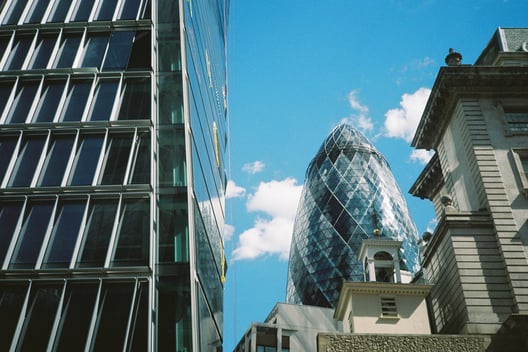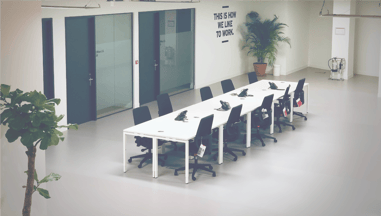The future of the workplace
COVID-19 has caused the biggest and most dramatic shift in working practices that we’ve ever seen. With a huge rise in remote working, many were quick to deem the office obsolete.
However, while we’re not out of the woods just yet, and most employees are still working from home, it’s increasingly clear that it’s much too soon to herald the death of the office as we know it.
Our Occupancy Index has repeatedly shown that while working patterns are shifting, a growing number of workers are heading back to the office. Last spring, an average of just 8% of office-based staff were making the commute, but that figure jumped to around 18% this January.
Flexible working brings a host of advantages, but it’s certainly not without its challenges. Here are some of the key issues employees contend with when working from home:
- Blurred lines between personal and professional life
- Distractions and interruptions
- Challenges with communication and coordination
- Loneliness and lack of human interaction
- Difficulties staying motivated
- Technology hiccups
As a result, a large majority of employees are keen to return to the office in some capacity, albeit with more freedom to work remotely whenever they like.
So, the big question is: what will the workplace we return to actually look like?
A hybrid workplace model
The hybrid workplace model was definitely growing in popularity before the pandemic, but COVID-19 has really accelerated the trend. Companies have seen that a blend of office and home-based work is not just feasible, but can be beneficial for everyone involved.
In a recent workplace study, employees said that they ideally want to work from home two days a week and in the office for three. And a Knight Frank survey found that only 8% of employees want to work from home five days a week.
Now’s the time for careful planning, supported by the right technology, to ensure companies can implement a great flexible working strategy.
By displaying real-time occupancy data, a smart building platform can help companies to understand and control how their space is being used. Smart alerts can be used to direct employees to underutilised floors or empty desks, ensuring social distancing regulations are complied with.
It’s important for companies to adopt this technology now to get ahead of the curve and make the return to work as seamless as possible.
To learn more about the value of occupancy monitoring, check out our blog post:
A bigger focus on collaboration
The office is, and always will be, much more than desk space. It brings huge social value by bringing colleagues together to connect, collaborate and create: things that are all much harder to achieve over Slack.
Our Occupancy Index has shown a significant increase in meeting usage, showing the value placed on face-to-face meetings. Before the outbreak of COVID-19, 48% of people came to the office even when they weren’t using a meeting room, but since then, 96% of people coming in are making use of face-to-face meetings.
It seems likely that some offices will be reconfigured to house larger meeting rooms, ready for brainstorming and collaboration.
The office could essentially become one big break-out area for meetings, training and the exchange of knowledge and ideas. It might actually regain its appeal, and become a place we look forward to commuting to connect with our colleagues.
A bigger focus on wellness
Along with collaboration, there’s also a real need to ensure workplaces have a much bigger focus on employee health and wellbeing.
The pandemic has brought good indoor air quality right to the top of the agenda. Countless studies have shown the link between poor air quality and the transmission of airborne viruses like COVID-19, as well as how long they can survive in the air.
Poor indoor air quality and insufficient ventilation can also cause Sick Building Syndrome (SBS) symptoms, and a significant reduction in employee productivity and cognitive function.
In order to provide a healthy and productive working environment, companies need to consider a range of factors, including:
- Ventilation
- Filtration
- Microbe and mould control
- Humidity control
- Cleaning products and practices
Real-time monitoring is the best tool available to help companies proactively improve their air quality. With a smart building platform, automatic alerts notify you when key factors deviate from their optimal zone, so that steps can be taken to maintain a healthy indoor environment all of the time.
The benefits of monitoring and improving indoor air quality are huge. Companies will be able to improve employee health and wellbeing, reduce absenteeism, optimise productivity, and increase talent attraction and retention.
What does the future hold?
After a year that saw our working habits change completely, the next year will be all about implementing the right technology to not only catch up to those changes, but to create a workplace that will be fit for the future.
We really believe that we’re not experiencing the death of the office, but facing an exciting opportunity for rebirth. Employee expectations have changed, and we’ve all realised the benefits of a more flexible working life.
As and when offices are able to reopen, companies need to be proactive about creating a collaborative, healthy, and productive workplace, that employees are genuinely excited to return to.
Want to keep track of how many people are going into the office and how working patterns are changing? Click here to view our Occupancy Index, and make sure you bookmark it so you can keep an eye on how things change in the coming months.



